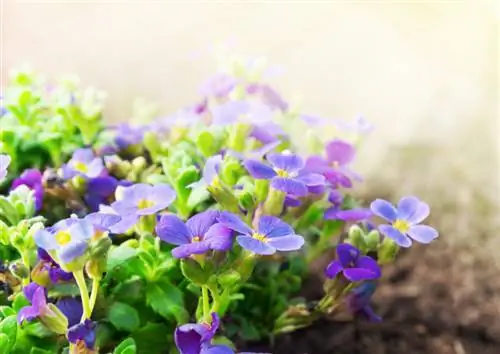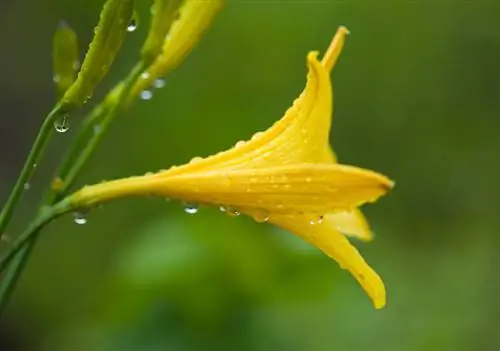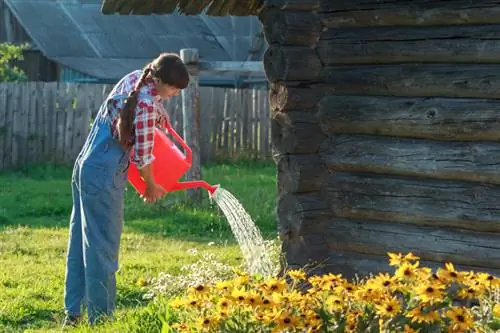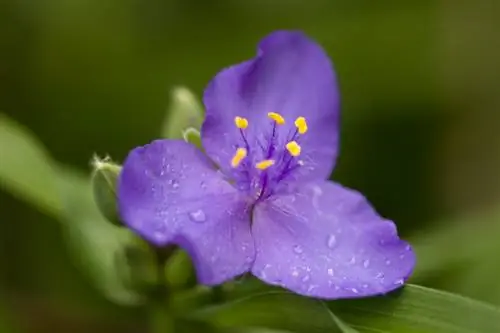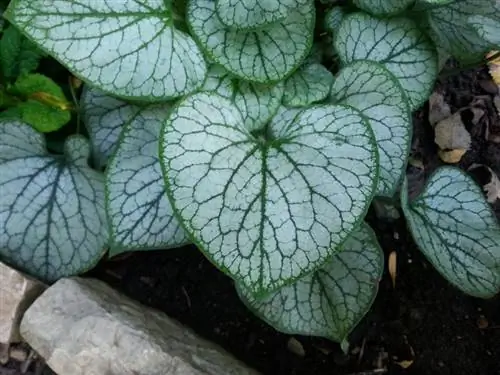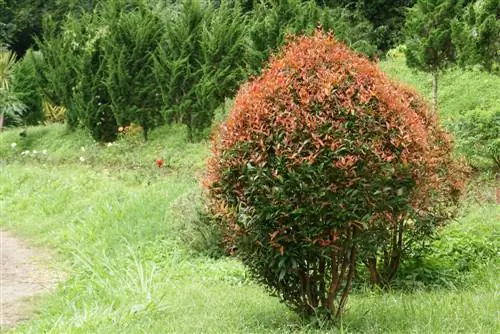- Author admin [email protected].
- Public 2023-12-16 16:46.
- Last modified 2025-01-23 11:20.
Whether on dry stone walls, in herbaceous beds or in the rock garden between the paths - the blue cushion is undemanding. And yet it still needs a certain amount of care to ensure that it blooms profusely every year and maintains its dense growth. What is really necessary?
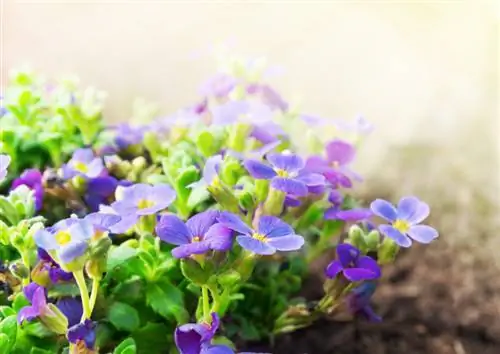
How do you properly care for the blue cushion?
The blue cushion requires little care: occasional fertilization, watering, especially in dry soils, overwintering is usually not necessary, protection from pests and diseases such as snails and gray mold. Cutting and dividing every 4 to 6 years promotes flowering and growth.
Does the blue cushion need fertilizer?
The blue cushion inevitably does not need to be fertilized every year if it was planted in nutrient-rich soil. If you want to stimulate its growth, a subtle addition of fertilizer in the spring, for example in the form of rotted compost (€41.00 on Amazon), is sufficient.
Free fertilizer comes in the form of eggshells. They contain a lot of lime, which benefits the blue cushion. The eggshells are pulverized and then carefully mixed into the substrate as fertilizer.
Is it right that you don't have to water the blue cushion?
It is true that the blue cushion can cope well with dry soil. But it doesn't like longer dry periods. Therefore, it should be watered during dry periods. Otherwise, watering is not necessary. On the contrary, soil that is too moist would quickly lead to rot. This cushion perennial does not tolerate waterlogging at all.
Is wintering necessary and useful?
The Blue Pillow:
- is frost-proof
- can tolerate temperatures down to -20 °C
- can cope without winter protection
- needs protection in the form of brushwood and leaves in extreme sub-zero temperatures
- should be removed from winter protection as soon as possible (otherwise there is a risk of fungal diseases)
Are there potential diseases and pests?
If there is nothing better in terms of green nearby, snails like to attack the leaves of the blue cushion. Otherwise there are no typical pests. Gray mold can occur due to diseases if there is too much moisture.
When and how is the blue cushion cut?
Immediately after flowering, the blue cushion is cut. The cut should be done by June at the latest, as the flower buds will then form for the next year and will otherwise be cut off.
When cutting the blue cushion, the shoots are shortened by half. This not only stimulates a second flowering, but also promotes dense growth.
Tip
The blue cushion should be divided every 4 to 6 years. When the opportunity arises, it can be transplanted and propagated straight away.

